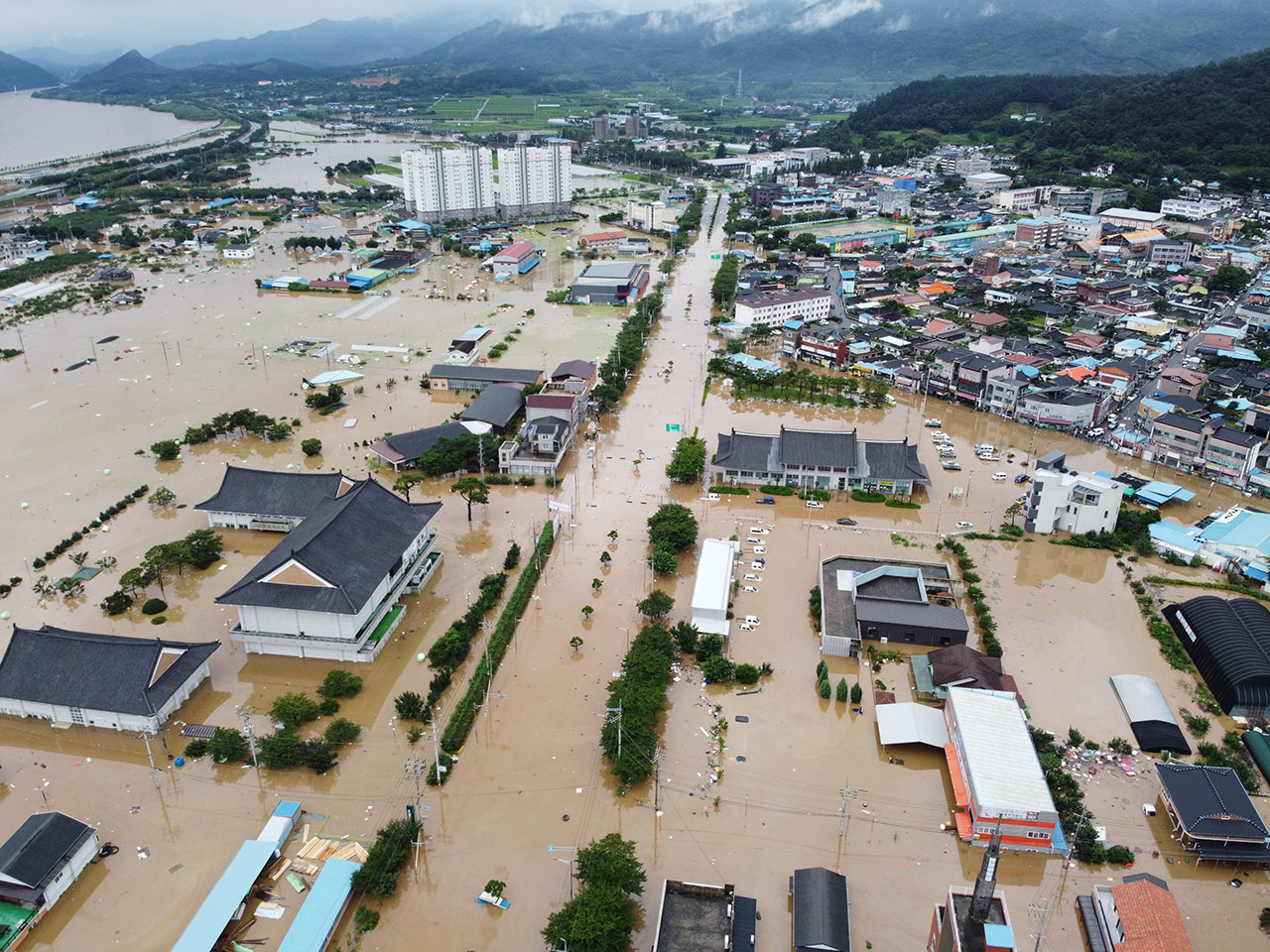
Major Affected Areas and Situations
Beijing and Hebei Province
In Beijing, reservoirs were activated for flood control for the first time since 1998. Despite these measures, significant damage occurred in several areas of Beijing and Hebei Province. Zhuozhou in Hebei Province experienced severe flooding due to the overflow from upstream rivers. The release of floodwater from Beijing exacerbated the flooding in surrounding areas, worsening the situation in Zhuozhou.
Tianjin
The floodwaters flowed downstream along the Hai River Basin, reaching Tianjin and causing substantial impact. Many residents in this area were also evacuated, and rescue operations are actively ongoing.
Rescue Operations and Response
As the flooding situation worsened, the Chinese government deployed a large number of personnel for emergency rescue operations. In the Beijing, Tianjin, and Hebei regions, 22,823 firefighters and 3,128 flood prevention and rescue teams were mobilized. Additionally, Hebei Province saw the active participation of 153 civilian rescue teams in the ongoing rescue efforts.
The Chinese government has also allocated 44 million yuan (approximately 6.1 million USD) for disaster relief. Furthermore, the transport and finance ministries have established a 30 million yuan (approximately 4.2 million USD) fund for the emergency clearance of highways in Beijing and Hebei.
Causes of Flooding and Structural Issues
The floods resulted from record-breaking rainfall and the limitations of the flood control system. China’s flood control infrastructure, which includes reservoirs, levees, and flood retention areas, was overwhelmed by the sheer scale of the floodwaters. The situation was further complicated by challenges in mountainous regions and communication blackouts, making rescue operations more difficult.
This flooding event has caused significant harm to many people, and rescue and disaster recovery efforts are still ongoing. The Chinese government and regional rescue teams are doing their utmost to minimize the damage and assist those affected.

The Chinese Government's Response and Measures to Address Flood Damage
Emergency Rescue Operations and Personnel Deployment
The Chinese government has mobilized a large number of personnel to minimize the damage caused by the floods. In the Beijing, Tianjin, and Hebei regions alone, approximately 22,823 firefighters and 3,128 flood prevention and rescue teams have been deployed. Civilian rescue teams are also actively participating, with 153 civilian rescue teams engaged in rescue operations in Hebei Province.
Disaster Relief Fund Support
The Chinese government has allocated 44 million yuan (approximately 6.1 million USD) for disaster relief. Additionally, the transport and finance ministries have established a fund of 30 million yuan (approximately 4.2 million USD) for the emergency clearance of highways in Beijing and Hebei. These funds are being used to support rapid response and recovery efforts in emergency situations.
Activation of Flood Control Systems
China's flood control system consists of reservoirs, levees, and flood retention areas. Due to the recent floods, approximately 155 reservoirs and 8 flood retention areas have been activated. In Beijing, reservoirs were utilized for flood control for the first time since 1998, and these measures are being taken to minimize the damage caused by the floods.

Situation of the Residents
Evacuation and Provision of Temporary Shelter
Approximately 110,000 residents had to evacuate due to the floods. The government has arranged temporary shelters for the displaced residents and is providing them with necessary supplies and food. Those affected are living in these temporary shelters and are receiving support from both government and private organizations.
Rescue and Relief Operations
Many residents have been moved to safe locations through rescue operations. Rescue teams are working tirelessly to rescue residents isolated by the floods. Despite challenges in mountainous areas and regions with disrupted communications, the government and rescue teams are deploying helicopters and boats to evacuate the stranded residents.
Medical and Recovery Support
The government is providing medical support to the affected residents, with hospitals and medical teams mobilized to treat the injured and prevent diseases. Additionally, officials and volunteers are working together to repair homes and infrastructure damaged by the floods.



